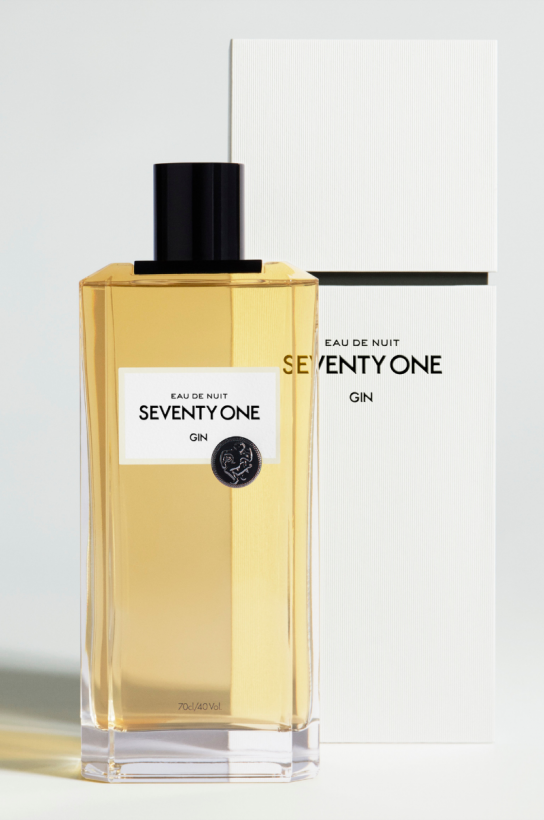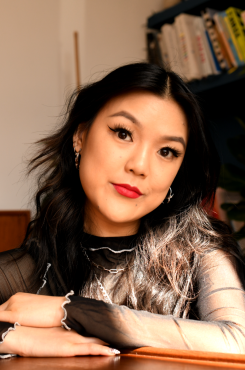CODE Meets Seventy One Gin
Published 2 December 2021
by Henry Southan

Seventy One Gin is the “world’s first luxury gin” from famed photographer Mert Alas. CODE caught up with Steve Wilson, master distiller, and Tasso Ferreira, who heads up the brand, on the process of developing the premium spirit.
How did the idea and concept come about?
Tasso: About five years ago I was introduced to Mert. He was looking for new avenues to express his creativity. We decided that it just had to be a spirit. Mert has all of this creativity and a connection with the night, so we wanted to start exploring this. With gin being his preferred spirit, it was quite intuitive to go in this direction. We spent about five months shaping up the idea and understanding the gin market and the needs and wants of its consumers. We were introduced to Steve Wilson, who acted as the main guy for executing all the creative ideas Mert had. Steve has over 40 years of experience in the industry and a great portfolio of success stories.
Steve: I’m a brand creator. I’ve been creating brands since 1973. The very first brand I was involved in creating was Bailey’s Irish Cream. Creating a gin like Seventy One Gin starts by looking at how you create and launch luxury brands. I suppose I sort of regard myself as a bit of a specialist in understanding what it takes to build a luxury spirit brand.
We first had to look at who we are targeting. These consumers are global. They’re not just British, they’re not just American, they’re global consumers. They might be in New York for Fashion Week, they might be Berlin for something else, and then be back in London for a launch party. The universe for luxury spirits and luxury brands more generally sits in about 50 cities around the world. You have to be present in these 50 cities if you want maximum success. Mert and Tasso understand this through their fashion connections, and the cities they travel to, and the luxury consumers they meet.
People aren’t stupid. You can’t just take anything and put a high price on it. People want value, and they want to buy into a brand. We’re also moving into a time now where people are drinking less, but drinking better.
What makes Seventy One Gin stand out in the luxury spirits market?
Steve: It was really important for us to differentiate. It’s easier for dark spirits like Don Julio 1942 and others, as you just have to add more years to add value to the product. A lot of the Scotch guys and the cognac guys make a lot of money doing that. We obviously can’t do the same with white spirits, so it makes you think more creatively about how to add value to the product. Firstly, we’ve got Mert’s creativity – he is highly influential in the art world. And then the liquid itself, we thought, what is the most expensive liquid in the world? It’s perfume. You can pay about £100 for 50ml of liquid in the perfume world. There’s a lot of similarities between perfume and gin. There’s the botanicals, flowers, essences and so on.
Most conventional gins differentiate themselves by making certain flavours stronger, for example. We wanted to look at rarity, which is a big factor for all luxury brands. We have got the rarest botanicals and even if they are a common botanical, for example, juniper, we’re buying the very best Juniper from the very best place and the best time of year. Also, where most gin makers will boil all the botanicals at the same time, we distil them all separately, and to perfection, creating the precise balance we’re looking for in the spirit. This is what perfumers do too, they call them absolutes in that world, the absolute concentration for the perfect flavour of a botanical. Nobody’s done it this way before. We are the first. We marry all the distillations together by ageing them in three different wood casks. Rather than people recognising specific flavours when they smell or taste the gin, we want people to recognise it as Seventy One Gin.
Tasso: In our search for botanicals, we were looking for something that would represent the night. Most gins on the market aim themselves as more of a daytime drink, perhaps before dinner rather than after. One of the botanicals we found is a desert flower called ‘Queen of the Night,’ which is a flower that only blooms once a year, at night. When we distilled it, it was such a great fit for the direction we wanted Seventy One gin to go in, not sticking with the usual citrusy flavours.
Why the name Seventy One Gin?
Steve: So, as I said earlier, we age (marry) the flavours in wood casks, and we found that the optimal ageing time was 71 days. It was at 71 days where the spirit became a really smooth, subtle product, yet complex at the same time. You pick up the oak wood, the vanilla, hints of smoke and spice, and the subtle floral notes. This is a symphony when it comes all together.
What challenges did you face when creating Seventy One Gin?
Steve: As well as perfecting the spirit itself, I think Mert and Tasso were surprised by the sheer cost of creating such a handcrafted product.
Tasso: I think it’s worth it though, especially when the quality is there, and Mert has always had an eye for perfection in his work, and this was no different.
What a stunning bottle! Can you give us any insight into the design that went into the bottle?
Steve: The bottle and packaging were also really important for us. Tasso really drove the packaging. We again wanted to revert back to this perfume concept. The bottles are handmade and hand polished.
Tasso: It was a very long process! Mert would do lots of drawings of what he imagined the bottle would look like. We soon realised why there weren’t many gin bottles like ours because they are ridiculously difficult to produce! Mert was so keen in his vision though, wanting to create this iconic bottle. The bottle itself took about three years to perfect.
Are you spotting any trends in the drinks industry that the future might bring?
Tasso: People are drinking less, but better.
Steve: Yes, and craft spirits started getting a surge just before the pandemic. Also, many people say the gin boom is over, but I don’t think it is. There was a period where 200 brands were entering the market each week. We are the only luxury gin on the market in my opinion.
Where can we find you having a drink in London?
Tasso: A lot of places! Friday night, you’ll probably find me in Chiltern Firehouse!
Steve: Obviously wherever my client’s brands are! No, but seriously I love this business. Every week I like to explore the new “hot” bars in town.




